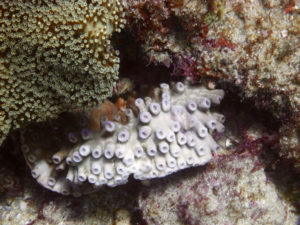15 April 2016
John Pandolfi is a Professor in Palaeoecology and Marine Studies at the University of Queensland. His comments below refer to the current bleaching event in the Solitary Islands.
University of Queensland
15 April 2016
John Pandolfi is a Professor in Palaeoecology and Marine Studies at the University of Queensland. His comments below refer to the current bleaching event in the Solitary Islands.
“The coral bleaching event that is wreaking havoc in the northern p art of the Great Barrier Reef is also being expressed along the subtropical coast of eastern Australia. Preliminary work being conducted in the Solitary Islands near Coffs Harbour in northern New South Wales, led by myself and the ARC Centre of Excellence for Coral Reef Studies, shows widespread coral bleaching with a number of coral genera feeling the heat. The hardest hit corals appear to be the pocilloporids, (Pocillopora in particular, but also Stylophora), and the genus Turbinaria. However, other taxa, such as Porites are also showing substantial bleaching.
art of the Great Barrier Reef is also being expressed along the subtropical coast of eastern Australia. Preliminary work being conducted in the Solitary Islands near Coffs Harbour in northern New South Wales, led by myself and the ARC Centre of Excellence for Coral Reef Studies, shows widespread coral bleaching with a number of coral genera feeling the heat. The hardest hit corals appear to be the pocilloporids, (Pocillopora in particular, but also Stylophora), and the genus Turbinaria. However, other taxa, such as Porites are also showing substantial bleaching.
Of particular concern is that in many places around the Solitary Islands, the two hardest hit corals are two of the most abundant. Moreover, some of the Pocillopora colonies are dying or have already died. Should mortality ensue for these two dominant corals on the reef, Australia’s subtropical reefs could undergo major changes in their biotic composition. On the positive side, many of the hardest hit corals on the Great Barrier Reef, such as Acropora, are showing only minimal stress to the sub-tropical bleaching event.”
For more information on current coral bleaching and more comments from experts please follow the LINK.